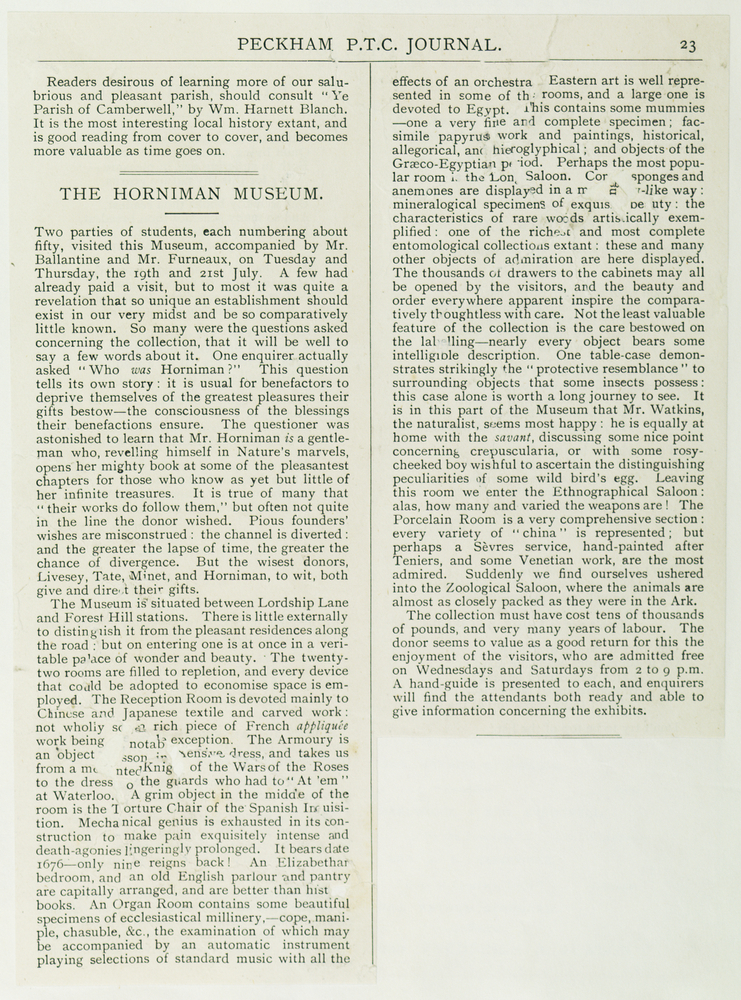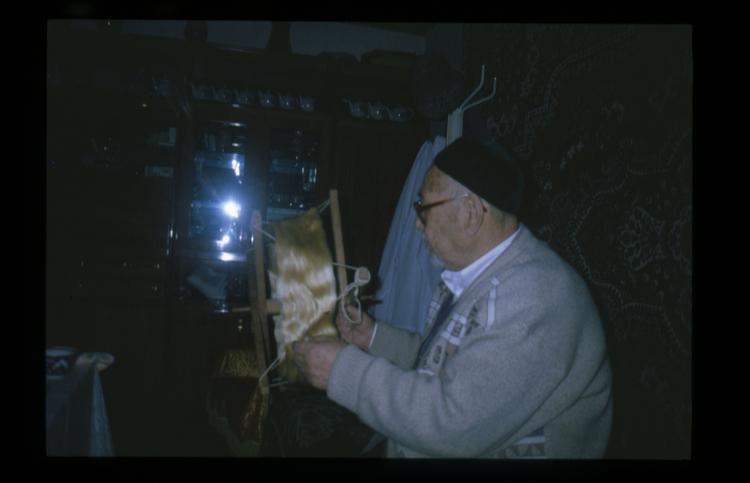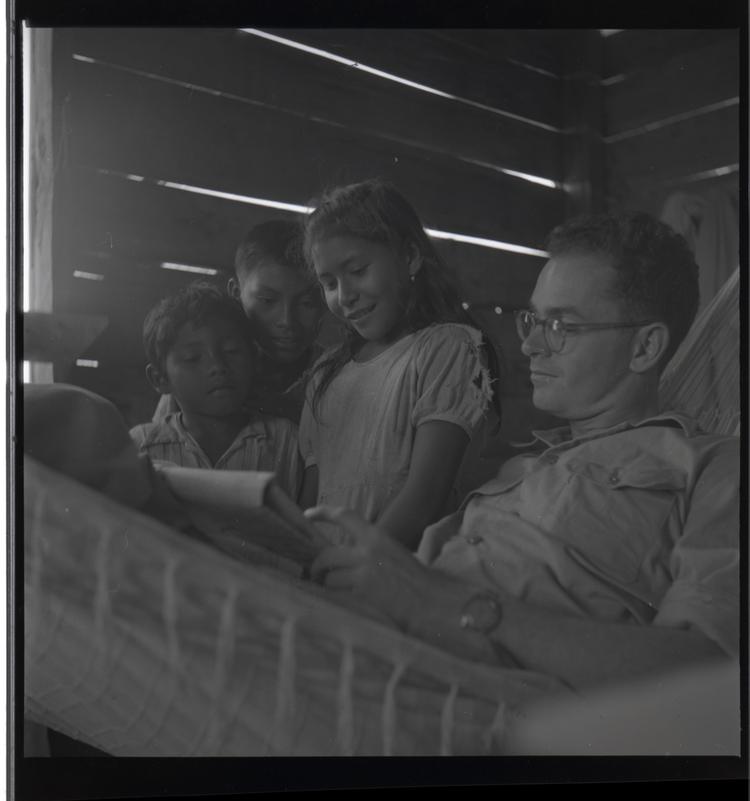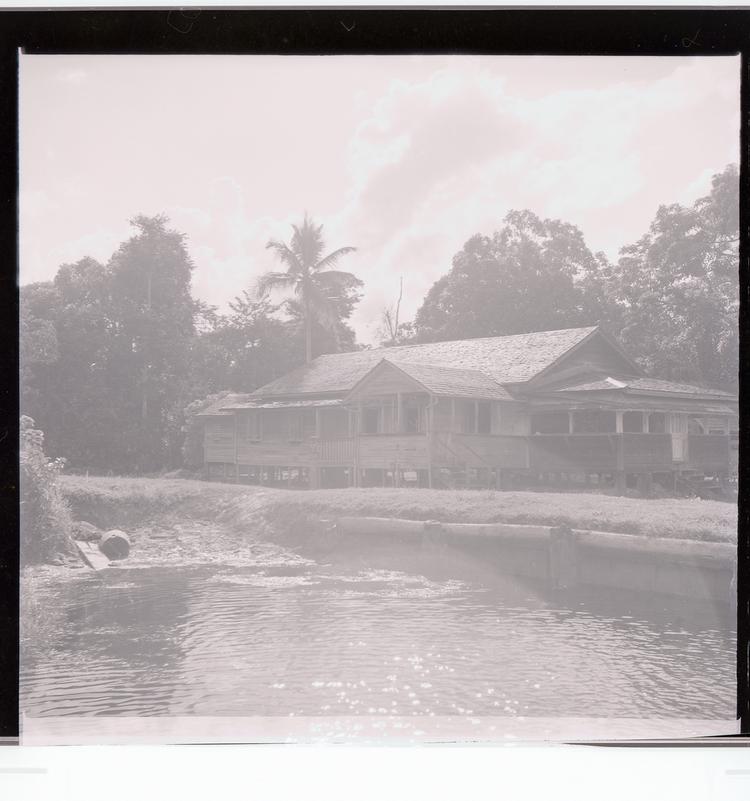
One newspaper article about the Horniman Museum published in the Peckham P. T. C. Journal, unknown year.
Two parties of students, each numbering about fifty, visited the Museum on Tuesday and Thursday, the 19th and 21st of July. Thoroughly impressed by what they saw, the students had a lot of questions about the collection at the end of their visit, and one of these questions was “Who was Horniman?”. The questioner was surprised to find out that Mr. Horniman is a businessman, lover of Nature, collector and benefactor who put together this collection out of sheer passion for the natural sciences, and then, similar to other great donors such as Tate, Minet or Livesey, he decided to share the results of his efforts with the general public.
The Museum is placed between the Forrest Hill and Lordship Lane train stations. The exterior of the Museum building is much in tone and indistinguishable from the other houses in the area. Inside, however, there’s a whole different world. There are twenty-two rooms full with exhibits, and every imaginable device is employed in order to maximize display space. The Reception Room is dedicated mainly to Chinese and Japanese textile and carved work. The Armoury houses, apart from historical armours and weapons, the Spanish Inquisition Torture Chair dating from 1676. The Elizabethan bedroom and the old English parlour are sure to impress with their authentic historical air. The visiting of the Organ Room might sometimes be accompanied by the music generated by an automatic instrument, with all the effects of an orchestra. A large room of mummies and papyrus is devoted to Ancient Egypt. Perhaps the most popular room is the Long Room, with a vast collection of sponges, anemones, mineralogical specimens, and one of the most complete entomological collections in existence. The clearly labelled drawers can be open by the visitors, and Mr. Watkins (the museum’s naturalist) is always most happy to discuss the specimens in detail. The Porcelain Room has a comprehensive china collection from all over the world, with a remarkable Sevres service always catching the eye.
The collection must have cost a great deal, in terms of both money and labour that went into it. And for all his troubles, the owner seems to find a good return simply in the enjoyment of the visitors. The museum is open free of charge on Wednesdays and Saturdays from 2 pm to 9 pm. A free hand guide is handed out to each visitor, and there are attendants ready to give out any required information concerning the exhibits.






